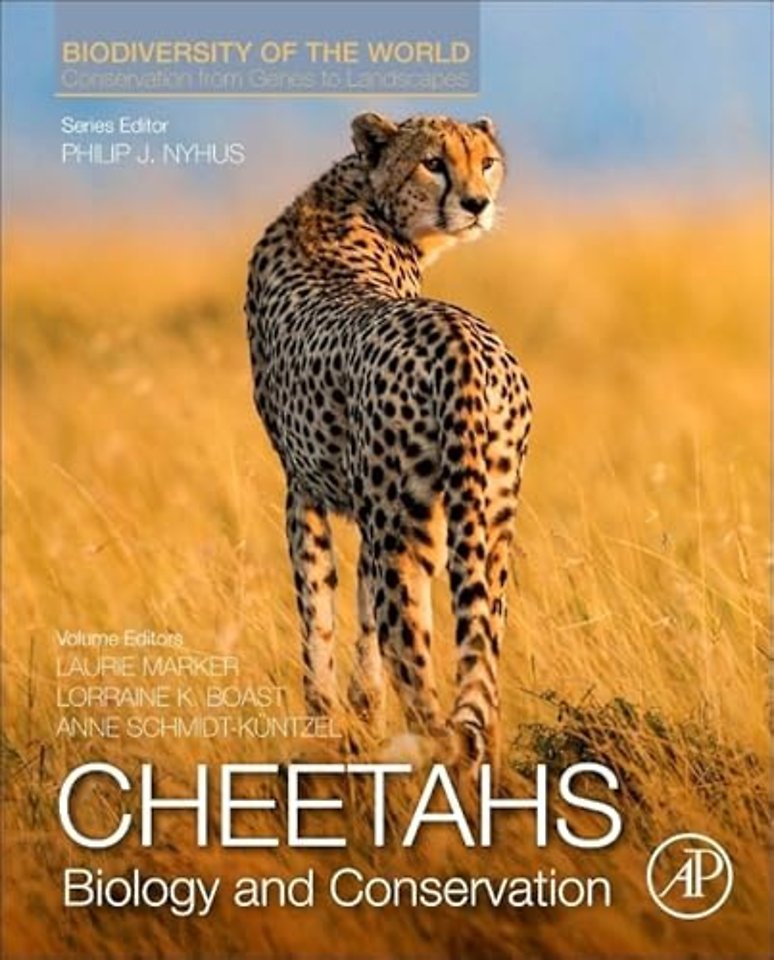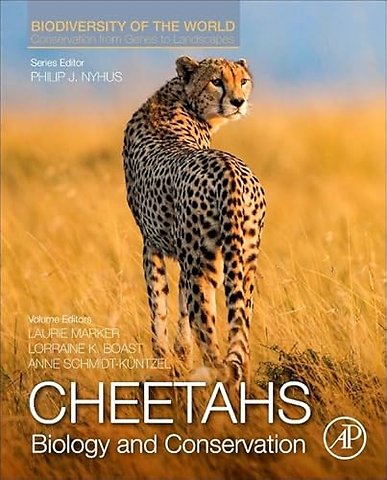<p>Section 1: the Cheetah<br>1. A Brief History of Cheetah Conservation<br>2. History of the Cheetah–Human Relationship<br>3. The Cheetah: Evolutionary History and Paleoecology<br>4. Cheetah Rangewide Status and Distribution<br>5. Asiatic Cheetahs in Iran: Decline, Current Status and Threats <br>6. Conservation Genetics of the Cheetah: Genetic History and Implications for Conservation<br>7. Cheetah Specialization: Physiology and Morphology <br>8. Ecology of Free-Ranging Cheetahs <br>9. Behavior and Communication of Free-Ranging Cheetahs</p> <p>Section 2: Conservation Threats<br>10. Drivers of Habitat Loss and Fragmentation: Implications for the Design of Landscape Linkages for Cheetahs<br>11. The Status of Key Prey Species and the Consequences of Prey Loss for Cheetah Conservation in North and West Africa <br>12. The Impact of Climate Change on the Conservation and Survival of the Cheetah <br>13. The Costs and Causes of Human-Cheetah Conflict on Livestock and Game Farms<br>14. Pets and Pelts: Understanding and Combating Poaching and Trafficking in Cheetahs</p> <p>Section 3: Conservation Solutions<br>15. Use of Livestock Guarding Dogs to Reduce Human-Cheetah Conflict<br>16. Improved and Alternative Livelihoods: Links Between Poverty Alleviation, Biodiversity and Cheetah Conservation<br>17. Coordination of Large Landscapes for Cheetah Conservation<br>18. Cheetah Conservation and Educational Programs<br>19. Protected Areas for Cheetah Conservation<br>20. Cheetah Translocation and Reintroduction Programs: Past, Present, and Future<br>21. Global Cheetah Conservation Policy: A Review of International Law and Enforcement</p> <p>Section 4: Captive Cheetahs<br>22. History of Cheetahs in Zoos and Demographic Trends Through Managed Captive Breeding Programs<br>23. The Role of Zoos in Cheetah Conservation: Integrating Ex Situ and In Situ Conservation Action<br>24. Clinical Management of Captive Cheetahs<br>25. Diseases Impacting Captive and Free-Ranging Cheetahs<br>26. Nutritional Considerations for Captive Cheetahs<br>27. Reproductive Physiology of the Cheetah and Assisted Reproductive Techniques <br>28. Communicating the Conservation Message—Using Ambassador Cheetahs to Connect, Teach, and Inspire</p> <p>Section 5: Techniques and Analyses<br>29. The Use of Remote Camera Trapping to Study Cheetahs: Past Reflections and Future Directions<br>30. Spoor Tracking to Monitor Cheetah Populations<br>31. Mining Black Gold—Insights from Cheetah Scat Using Noninvasive Techniques in the Field and Laboratory: Scat-Detection Dogs, Genetic Assignment, Diet and Hormone Analyses<br>32. Field Methods for Visual and Remote Monitoring of the Cheetah<br>33. Capture, Care, Collaring, and Collection of Biomedical Samples in Free-Ranging Cheetahs<br>34. Citizen Science in Cheetah Research <br>35. Social Science Methods to Study Human–Cheetah Interactions<br>36. Spatial and Landscape Analysis: Applications for Cheetah Conservation <br>37. Now You See them, Soon You Won’t: Statistical and Mathematical Models for Cheetah Conservation Management <br>38. A Review of Population Viability Analysis and Its Use in Cheetah Conservation</p> <p>Section 6: The Future<br>39. The Conservation Status of the Cheetah<br>40. What Does the Future Hold for the Cheetah?</p>

